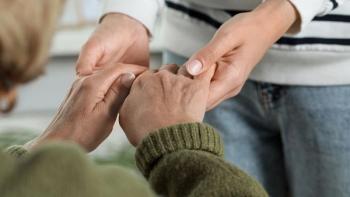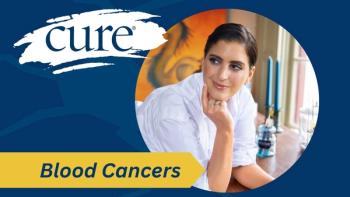
Nearly Half of Cancer Survivors Have a Family Member or Friend as an Informal Caregiver
Sociodemographic factors such as race, marital status, health status and age all played a role in understanding which patients and survivors are receiving informal care from a family member or friend during and after treatment.
More than half of cancer survivors reported in a survey that they had an informal caregiver, such as a family member or friend, during their cancer and survivorship journey to provide both physical care and emotional support.
Results from this study were published in Cancer.
“Results show which cancer survivors are more or less likely to have informal caregivers,” said Dr. Amanda Borsky, lead author on this study and doctor of health at the Agency for Healthcare Research and Quality, in an interview with CURE®. “Cancer survivors who are less likely to have informal caregivers may need more formal or other types of support as they undergo cancer treatment and transition into survivorship.”
Informal caregivers average about 33 hours a week caring for a patient or survivor, which can often lead to changing their work schedule and making financial sacrifices, the study authors noted.
“We know informal caregivers, such as family and friends, provide people with cancer important care and emotional support,” Borsky explained. “Prior to this study, little was known about which individuals have access to such caregivers. Informal caregivers can be family members and friends of an individual with cancer, such as spouses, children, friends, siblings, parents and other relatives. Depending on the needs of the cancer survivor, informal caregivers can help with a wide range of activities including bathing, eating, toileting, shopping, driving, managing finances, medical appointments and support, and more.”
Researchers assessed survey responses from 720 survivors of cancer (defined as the time from diagnosis until death) . In particular, patients were adult survivors of cancer not including nonmelanoma skin cancer who were treated less than three years before completing the survey. The major focus of the study was to assess whether survivors reported having an informal caregiver.
A total of 55.2% of survivors reported having an informal caregiver either during or after their treatment. Additionally, this number did not differ between those who had formal caregivers (paid for home health care) and those who did not.
“This might reflect that people without informal caregivers may truly be without support or that paid caregivers may serve different roles than informal caregivers,” the study authors noted.
Race and ethnicities other than White were more likely to have an informal caregiver compared with non-Hispanic Whites (65.8% and 52.7%). Survivors in poor or fair health were more likely to have an informal caregiver (65.1%) compared to those with good to excellent health (50%).
In this study, 60% of survivors who had an informal caregiver reported making positive life changes compared with 46.5% of patients who did not report positive life changes.
“Prior research has … shown that cancer survivors with a caregiver were more likely to have positive cancer experiences, but we don't know whether that ultimately helps improve their health,” Borsky noted. “It’s important to note that more research is needed to better understand the impact of having a caregiver on cancer survivors’ physical and mental health.”
Survivors were most likely to have their spouse as their informal caregiver (64.2%), followed by children (36%), friends (22.5%), siblings (13.3%) and parents (12.8%). A relationship between a survivor and their caregiver also varied by sex, males were more likely to have a spouse as their caregiver than females (72.6% versus 58.1%), whereas females were more likely to have a child as their caregiver than males (45.3% versus 23.2%).
“Our study shows that the most common type of informal caregivers were spouses followed by children,” Borsky said. “By better understanding who is most likely to be the caregiver of a cancer survivor, we can better target support including education and training for caregivers.”
An analysis of the available survey data showed that women were more likely to have an informal caregiver than men (59.6% versus 50.1%), as well as married survivors compared to non-married survivors (59% versus 49.5%). Those aged 65 to74 years were less likely to have an informal caregiver compared to those aged 20 to44 years (48.9% versus 71.5%).
“This study tells us which cancer survivors have informal caregivers, but more research is still needed to help us better support and meet the needs of both cancer survivors and their caregivers,” said Borsky. “For example, we need to better understand what support cancer survivors without informal caregivers need and whether they might need more formal support as they go through cancer treatment and transition into cancer survivorship.”
Limitations of this study include the lack of information on the survivor’s cancer stage, grade, severity and treatment, which authors stated could affect the need for a caregiver. In addition, the survey did not inquire about the presence of a caregiver during or after treatment specifically and if the survivor had previous physical and mental health conditions before a cancer diagnosis.
For more news on cancer updates, research and education, don’t forget to




